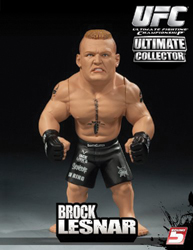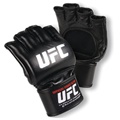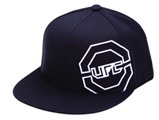In an age when an image can translate into higher ticket sales, more merchandising revenue and ultimately attracting better athletes, what do teams do when that image isn’t associated with championships and Heisman trophy winners? They rebrand. Some college teams, like the University of Oregon, have found great success with their striking new uniforms and logos, and others are following suit.
Even sports leagues have adjusted their branding strategy in hopes of attracting a broader audience base. The UFC is a prime example. With the seven-year deal it signed with Fox, UFC programming is finally reaching beyond the pay-per-view and cable network viewers. With this expansion into the general populace comes the hope for greater ticket sales, higher pay-per-view subscriptions and ultimately increased merchandising revenue. The UFC sells everything from toy Brock Lesnar action figures, to the Octagon line of performance apparel, to trading cards. But beyond methodically expanding its revenue stream, the leader in all things MMA is also focused on the fact that its primary asset is its intellectual property.
We mustn’t leave out the athletes themselves. With Top Rank taking at least some of the reins when it comes to the marketing and ultimately the branding of world-renowned boxer and politico Manny Pacquiao, even athletes are a brand unto themselves.
With great success in branding and rebranding an image comes the inevitable question: Now what? While most recognize that their brand name and image are valuable, some may not realize that it can be one of their most valuable assets. And, like with any other asset, teams need to document, secure and protect that asset.
Generally speaking, under copyright law, whoever creates a team’s new uniform or helmet design is the owner of the work. So, when a team works with manufacturers like Nike and Adidas, they first need to ask themselves, who owns these new designs? Out of the genius mind of Tinker Hatfield, is that work of art
 |
UFC is one example of a sports league expanding into apparel, equipment and licensed goods to attract a broader audience.
|
created on behalf of Nike, or the team? If the answer is the team, then a signed, written agreement must reflect that. Let me repeat, it’s important to document who’s going to pay what when, but teams need to know who at the end of the day owns what. Same goes for trademarks (e.g., logos, and even a college name, mascot or initials can be a trademark. Just ask the University of South Carolina, whose attempt to rebrand to “SC” was successfully blocked by USC).
Now that a team has everything neatly documented and organized, how does it go about securing it? The first basic step in securing a brand is to register it. Seems simple enough, and in most cases, it is. But particularly with a rebranding of an image, that process needs to be planned out and implemented based on a well-thought-out strategy. Some questions to consider:
• Can a team file trademark and copyright applications before the first game where the uniforms and helmets are debuted?
• Where should it register — in the state where they’re located, federally, worldwide?
• Aside from uniforms and helmets, will the new logo be on foam fingers, flags and cups? If so, should the logo be registered for these other products as well?
• What’s the benefit in that — if a team owns the logo, doesn’t the team own it for everything?
This is where a seasoned intellectual property attorney comes in handy. Because isn’t “intellectual property” just another fancy word for a brand name? Yes, but “brand name” is a much broader concept and more valuable asset than most realize, making its protection critical.
Once a team has documented who owns what, it’s begun the process of securing and registering the brand, how does it go about protecting that brand? The team and its IP attorney need to map out an anti-counterfeiting program. This can range from a simple approach of subscribing to watch reports — wherein a vendor watches for domain names and trademarks that are being registered that are similar, as well as monitoring common e-commerce sites — to recording registrations with U.S. Customs to prevent the importation of counterfeit products or “gray market goods.” These are goods that are legitimately bought by an authorized overseas manufacturer, but imported and sold domestically without the IP owners’ permission, undercutting U.S. distributors. How simple or complex the approach in protecting one’s IP depends on the temperament of the brand owner. But without the last step of protecting a brand, a team’s efforts to document and secure may all be for naught. Because as counterfeiters and sellers of gray market products eat away at the good will and recognition the team has developed in the brand, the more difficult it is ultimately to control and monetize its IP.
So, before a team conjures images of itself basking in the glow of a successful branding or rebranding project, it must ask: Have we done what’s necessary to document, secure and protect that new image?
Jennifer Ko Craft (jcraft@gordonsilver.com) is a shareholder and chairman of both the intellectual property and entertainment and sports law practice groups at Gordon Silver.







